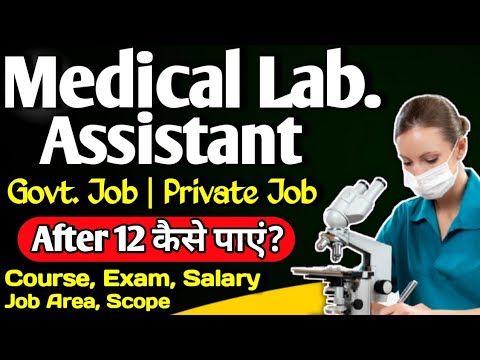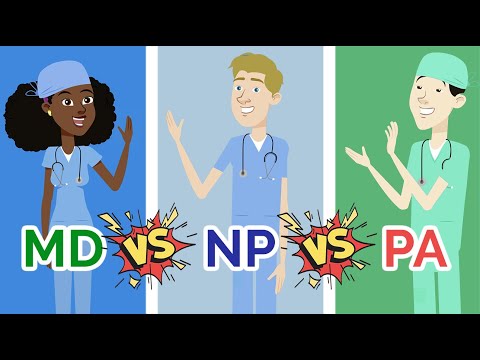How Hard Is It To Be A Medical Assistant?
Contents
Being a medical assistant is a demanding but rewarding career. Here’s what you need to know about the training, certification, and job outlook.
Checkout this video:
Job Description
Medical assistants perform a variety of administrative and clinical tasks to keep the offices of physicians and other health practitioners running smoothly. The duties of Medical Assistants vary from office to office, depending on the size and type of the practice. In small practices, medical assistants might handle all the administrative work, such as scheduling appointments, verifying insurance claims, billing and coding information for insurance purposes, taking inventory, ordering supplies, handling correspondence, booking travel arrangements for staff members, and handling medical records In larger practices, each medical assistant might specialize in a specific area.
Clinical duties might include taking medical histories and recording vital signs; preparing patients for examination; explaining treatment procedures to patients; collecting and preparing laboratory specimens; performing basic laboratory tests on-site; disposing of contaminated supplies; sterilizing medical instruments; authorizing prescription refills as directed by a physician; drawing blood; removing sutures; performing EKGs; giving injections when directed by a physician or under specific state rules; instructing patients about medications and special diets; and arranging follow-up visits.
Duties
Duties of medical assistants vary from office to office, depending on the size and type of the practice. In a small practice, a medical assistant might perform many duties, including scheduling appointments, taking medical histories and vital signs, giving injections, drawing blood, helping during office surgery, handling correspondence, billing and coding insurance forms, and handling laboratory specimens.
Skills
In order to be a good medical assistant, you need to have good people skills. You will be the one who is interfacing with the patients the most, after all. You need to be able to develop rapport quickly, put people at ease, and deal with difficult personalities without getting frazzled yourself. You will also need to know how to handle paperwork and keep track of details.
Education and Training
Education and Training
To become a medical assistant, you will need to complete an accredited medical assisting program. These programs are typically offered at community colleges and technical schools, and they can take anywhere from 9 months to 2 years to complete.
During your education, you will take classes in medical ethics, communication, anatomy, and physiology. You will also gain practical experience through externships or clinical rotations. Once you have completed your program, you will need to pass a certification exam to become a certified medical assistant.
Certification
There are several organizations that offer medical assistant certification, such as the American Association of Medical Assistants (AAMA) and the National Healthcare Association (NHA). To sit for the AAMA’s Certified Medical Assistant (CMA) exam, you must have completed an accredited medical assistant program. The NHA’s Certified Clinical Medical Assistant (CCMA) certification is open to anyone with a high school diploma or equivalent and at least 4 months of on-the-job training or an accredited medical assistant program.
Salary
The average salary for a medical assistant is $16.24 per hour. However, salaries range from $10.25 to $25.50 per hour. The median salary is $14.50 per hour. The median represents the middle of the salary range, so half of all medical assistants earn more than $14.50 and half earn less than $14.50 per hour.
Job Outlook
The job outlook for medical assistants is very good. The Bureau of Labor and Statistics projects that the occupation will grow by 29 percent between 2016 and 2026, much faster than the average for all occupations. This growth is primarily due to the aging baby boomer population, which is increasingly in need of medical care. In addition, as more and more insurance companies are beginning to cover preventive care, medical offices are expected to hire more staff to accommodate the influx of patients.
Pros and Cons
Pros:
– Most medical assistants have on-the-job training, which generally lasts about three months.
– They also learn by working with and observing more experienced medical assistants.
– Some community colleges and technical schools offer formal training programs, which can last from nine months to a year.
– Most formal programs include an externship, which gives students the opportunity to work in a healthcare setting and apply their skills and knowledge under the supervision of a licensed healthcare professional.
– Medical assistants can find employment in a variety of healthcare settings, such as doctors’ offices, clinics, hospitals, and long-term care facilities.
– Many medical assistants work full time, but some work part time.
Cons:
– Medical assistants must be able to handle stressful situations, such as seeing blood or dealing with angry or upset patients.
– They must be able to work well under pressure and meet deadlines.
– They must be detail oriented and able to multitask.
What to Expect
The most important thing to remember when considering a career as a Medical Assistant is that no two days are alike. You may be asked to do anything from administrative tasks to patient care, and each day will bring new challenges. This can be both exciting and overwhelming, but as long as you are prepared for the unexpected, you will do just fine.
One of the best things about being a Medical Assistant is that you get to help people every day. Whether you are assisting a doctor with a procedure or simply providing comfort to a patient who is in pain, you know that you are making a difference. This can be very rewarding, but it is also important to remember that it is not always easy. You will see people at their worst, and it can be difficult to deal with sometimes. However, if you have a positive attitude and are able to remain calm under pressure, then you will do just fine.
In order to be successful as a Medical Assistant, you need to be able to work well under pressure. You will often be required to juggle multiple tasks at once, and it is important that you remain organized and efficient. You should also have excellent communication skills, as you will be working with patients, doctors, and other medical staff on a daily basis. If you are not comfortable working with others or handling multiple tasks simultaneously, then being a Medical Assistant may not be the right career choice for you.
FAQs
Medical assisting is one of the fastest-growing occupations in the United States according to the Bureau of Labor Statistics. If you’re thinking about pursuing a career in medical assisting, you probably have some questions about what the job entails and what kind of training you’ll need. Here are answers to some frequently asked questions about becoming a medical assistant.
What does a medical assistant do?
Medical assistants are multi-skilled health professionals who perform administrative and clinical tasks in doctors’ offices, clinics, and other healthcare settings. Their duties vary depending on the size and location of their employer, but they typically include taking patient medical histories, recording vital signs, scheduling appointments, handling insurance paperwork, and assisting patients with billing questions. Medical assistants may also perform basic laboratory tests, give injections, or help remove sutures (stitches).
How do I become a medical assistant?
Most medical assistants have at least a high school diploma or equivalent, although some employers may prefer candidates who have completed an accredited medical assisting program. These programs typically last between one and two years and award a certificate or diploma upon completion. Some states have certification requirements for medical assistants, so it’s important to check the rules in your state before beginning your training.







